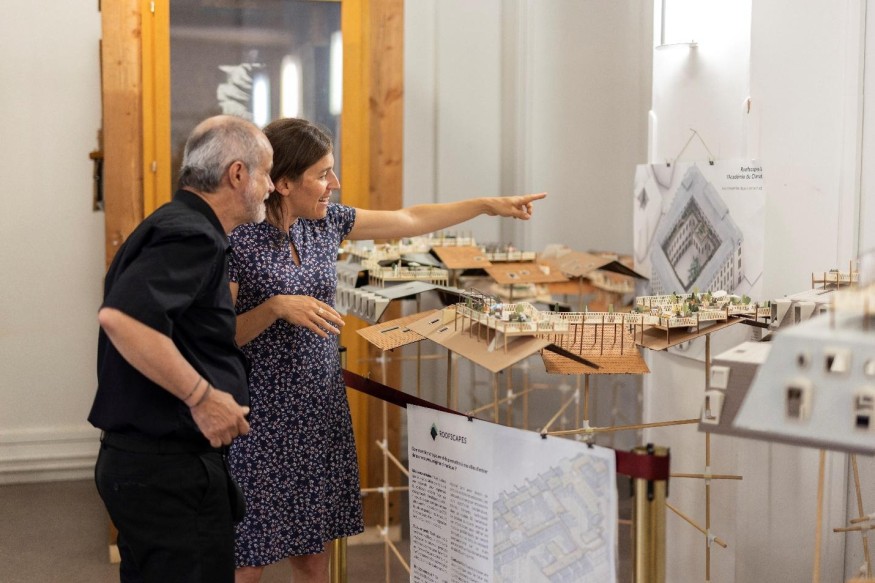
Cities currently house more than half of the world's population. Many issues develop when cities expand and this expansion varies by country, region, and city. Migration and natural expansion are still the drivers of urban growth in the global south, in particular. In these parts of the world, the expansion of most urban areas usually stems from significant migration from rural areas and villages to cities. Migration is the relocation of people to a certain location for better economic, social, academic, and healthcare opportunities. There are several motivations for migration, which are referred to as push and pull forces. Natural calamities and fewer work possibilities are examples of push forces that drive people out of a location. Pull factors include more well-paying employment and greater access to amenities like healthcare and education, which draw or entice individuals to a particular location. Urban expansion may strain a city's resources and highlight concerns such as cheap housing and urban pollution, but it will also increase demand for access to fundamental services such as clean water, sanitation, electricity, safety, healthcare, and education. Waste pollution, air pollution, and water pollution are all examples of urban pollution that adversely affect people. Cities produce far more garbage and pollution than rural places and use far more resources due to the high population density with unsustainable patterns of living, production, consumption, and commute. The production of waste mirrors these lifestyles, with a consequent massive volume, which in the absence of recycling, the circularity of use must be eliminated. As cities develop, managing the life cycle of what is produced and consumed becomes increasingly vital.
Cities in more developed nations are often older, more established, and have better resources to regulate urban expansion. Due to a lack of resources, developing nations may suffer more from controlling urban expansion and other difficulties. Although urbanization and urban expansion cause numerous problems, bad planning can aggravate these problems if they are not addressed. The consequences of the Covid-19 disaster have highlighted the necessity to reconsider urban planning in many cities. 'The City of Proximities' or 'The 15-Minute City,' by famous scientist and entrepreneur, Carlos Moreno, is a model that seeks a new urban lifestyle that favors the circularity of the economic, ecological, and social value in proximity by providing extensive access to essential local services within a maximum distance of 10 to 15 minutes on foot or by bicycle, to create a new multi-center and multi-services city.
Climate change, heat waves, growing water stress, air pollution, the location of urban living space, usable time, and the role of digital technology are undoubtedly new vital challenges for the years ahead. The man behind the thinking of such motives as "The 15 Minutes City" is Moreno, who obtained French nationality in 1986 and began his job and personal life to thank France for its compassion in providing him with refuge. He went on to become a university professor, a new technology specialist, and a global pioneer in cities and urban regions. In 1998, a new law on innovation and research in France encouraged researchers to start their firms. Professor Carlos Moreno was one of the first scholars in France to advocate for a multi-disciplinary cris cross approach and collaborative workspaces. With the help of his university, he seized the chance to gather together his brightest Ph.D. candidates. For decades he has been giving ideas for building cities that are no longer for vehicles, mineral cities, and vertical cities without a soul, with people living on one side and working away on the other. Moreno was involved in the creation of the Carnot Institutes, a French university technology transfer organization founded in 2006 by Jean-Jacques Gagnepain. He also collaborated on the innovative plan for the National Research Agency (ANR) under Jacqueline Lecourtier and with François Goulard as Minister of Research.
Moreno, the entrepreneur, is a dynamic, energetic, and innovative teacher-researcher. His concept of a 15-minute city has aroused international discussion. Its quick global expansion reflects the enthusiasm shared by a fresh viewpoint on urban planning in terms of the uses and importance of time in our lives, and our living environment. Although our means of mobility are reaching record speeds, we still get the terrible sense we are "running after time". The acceleration of the pace of life in urban planning is accompanied by a sense of being overwhelmed by a demanding routine. As a result, urban design and temporality are linked. To address the widespread ailment, the city must adapt to the varying paces and requirements of its people. This is a significant difficulty since the city is polyrhythmic (individuals have varied social and personal rhythms) and polychronic when shared (the use of their places varies according to the time). Moreno created the notion of "the 15-minute city" to address this difficulty: reducing long commutes with alternative decentralized work styles, and multipurpose places, building happy neighborhoods with public spaces for living. This urban transformation idea deviates from the prevailing urban planning that regulates the organization of well-developed regions around the globe and offers an exciting breakthrough.
Scientists/entrepreneurs like Carlos Moreno are innovators. They embrace changes in seemingly hopeless and difficult circumstances. They are always motivated to improve and develop new goods, and services and bring them to the market in the name of achieving a better quality of life for all.
© 2025 ScienceTimes.com All rights reserved. Do not reproduce without permission. The window to the world of Science Times.












